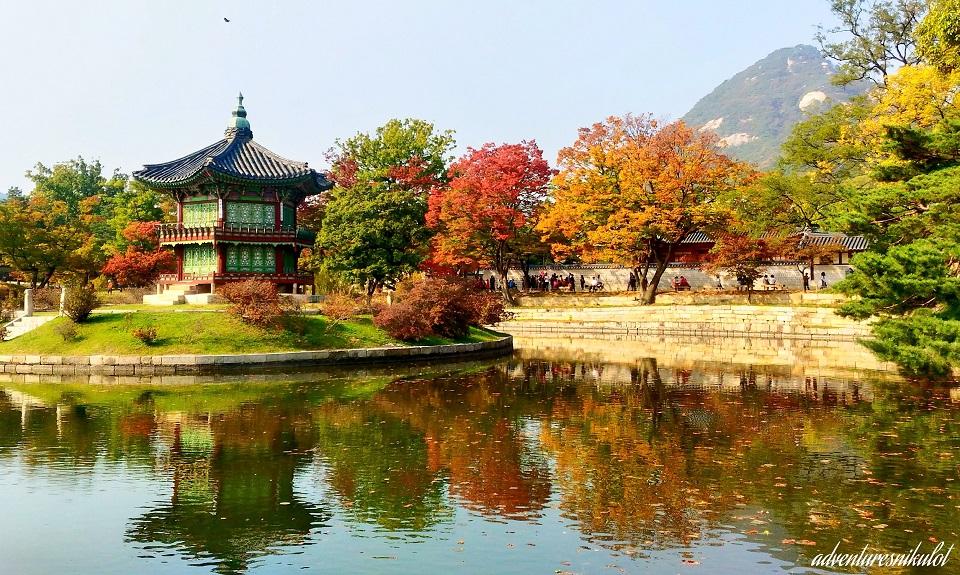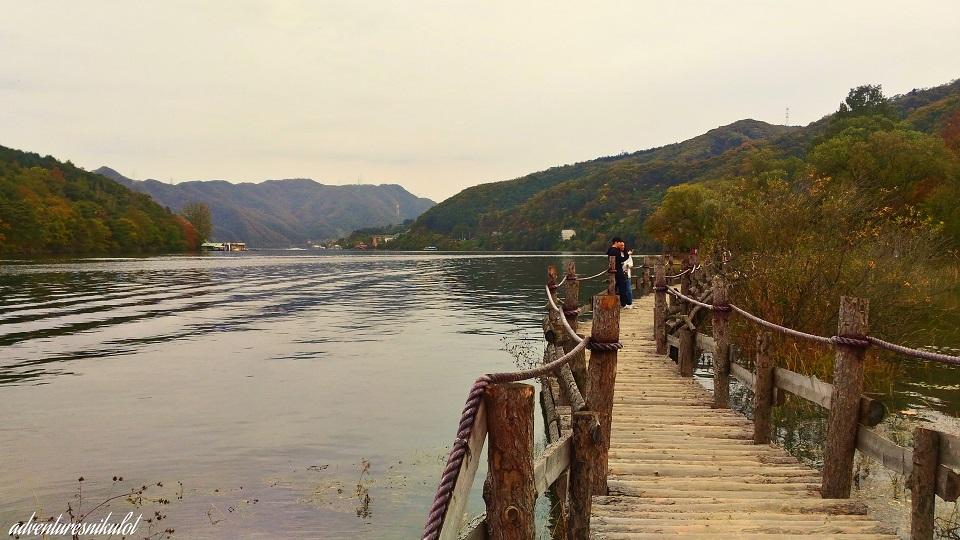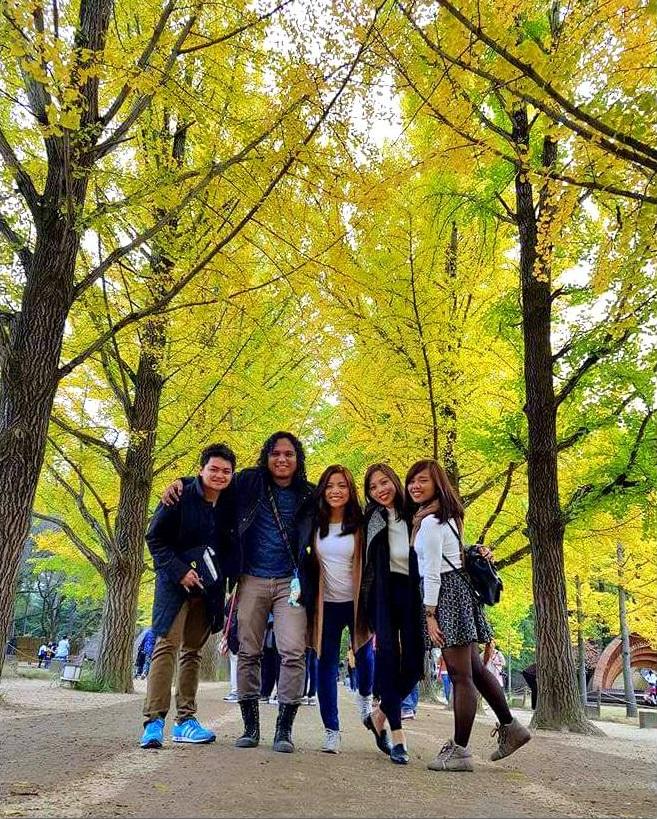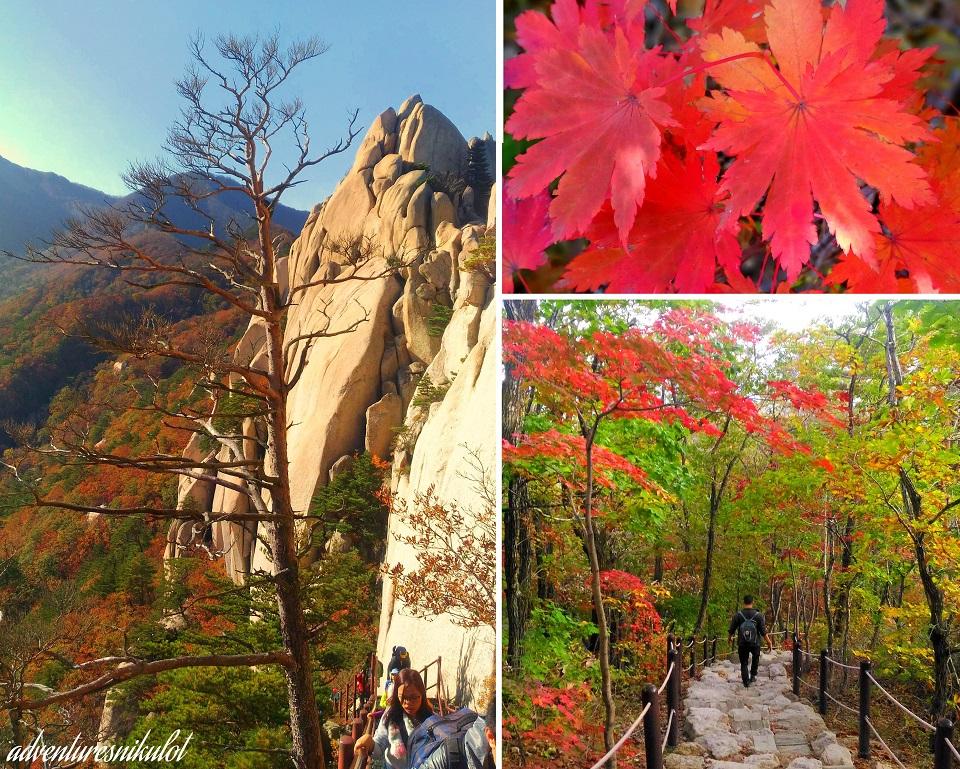Fall in Korea
Winter is coming, summer has ended. It’s that time of the year when the Northern Hemisphere transitions from warm weather to cold. Deciduous trees have their makeover from greens to skirts of xanthic gold and rust-colored leaves. Leaves pirouette down an invisible spiral of calm wind. The sun is sallow against a blue or sometimes a grey sky. South Korea, with its mild temperatures and gentle breezes, is a perfect place to experience fall.
Here are the best places to visit to experience autumn in South Korea.

Seoul’s palaces
Seoul City tour isn’t complete without a visit into the royal palaces. Gyeongbokgung and Changdeokgung, built during the Joseon dynasty (1392-1897), are in the heart of Seoul’s modern concrete jungle. Rent hanboks (Korea’s traditional costume) and become Koreanovela princes and princesses by touring the palaces. (Palace entrance fees are waived if you’re in hanboks).
Gyeongbokgung is the largest royal palace while Changdeokgung is a UNESCO World Cultural Heritage Site. Retreat away from the crowd in the gardens and inner royal courts. Feel the ambiance added by the autumn leaves and admire exquisite traditional architecture.
How to get there: take the train or city bus
Admission Fee: 3,000 Won per palace

Nami Island
Nami Island (Namiseom) is a tiny half-moon-shaped island in the North Han River. Aside from its natural beauty, the island has become popular among Korean and foreign tourists alike because of Koreanovelas.

After a short ferry ride, follow the footsteps of a great love story and walk under the towering majestic redwood trees. Continue until you reach the tunnel made by the outstretched branches of the golden gingko trees.
Relax on the grass as you admire the leaves of the maple trees in hues of gold, ruby and amber. Magpies and squirrels hop from tree to tree, ignoring the humans around them.
For serenity, away from the hustle and bustle of the crowd, find your way into the back of the island and find peace on the Han River.
How to get there: take the train to Gapyeong Station, then a bus or taxi to Gapyeong wharf
Admission Fee: 8,000 Won (includes ferry transfer)

Seoroksan National Park
Seoroksan National Park, a UNESCO biosphere reserve, is a popular autumn destination north of Seoul (3 hours away by bus). The Seoroksan Mountains have multiple hiking courses and cultural artifacts. Ulsanbawi, because of its dramatic rugged rock formations, is one of the most popular trails. Koreans love hiking, so don’t be beaten by the ajummas (older women) and the ajusshis (older men). Besides, the manicured trails and stairs are a walk in the park for experienced Filipino hikers.
The way up Ulsanbawi is a trail upstream pass Buddhist temples and mixed deciduous and pine forests. The summit offers spectacular views of Sokcho City from one side and the autumn kaleidoscope of green and orange foliage of the Seoroksan mountain range on the other side. Other trails in Seoroksan lead to a cave, falls, or other peaks. If you have limited time or do not want to hike, you can ride a cable car to one of the mountains.
How to get there: take the bus to Sokcho City, then the city bus to Soreoksan National Park
Admission Fee: 3,500 Won — BM, GMA News




